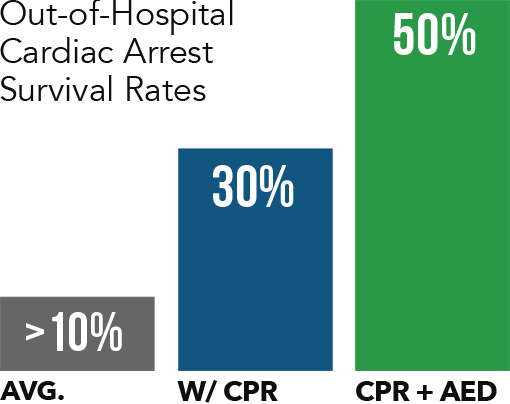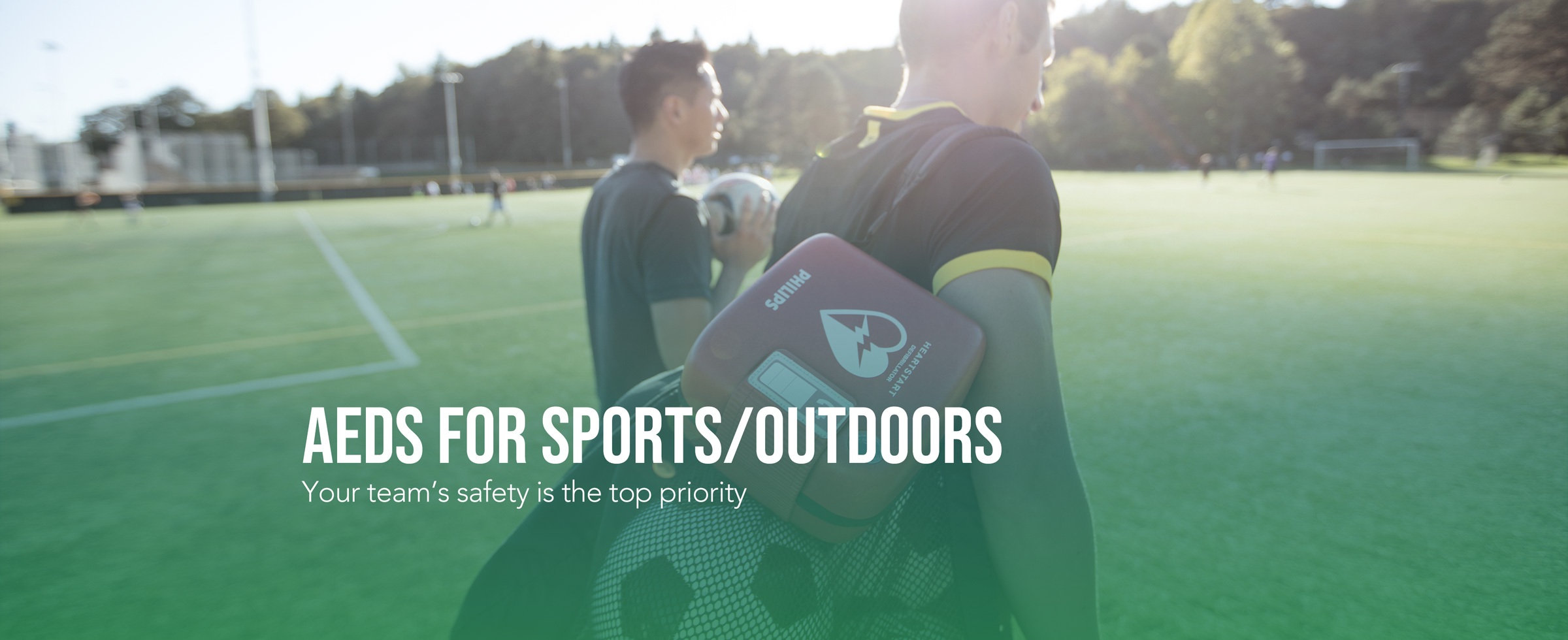
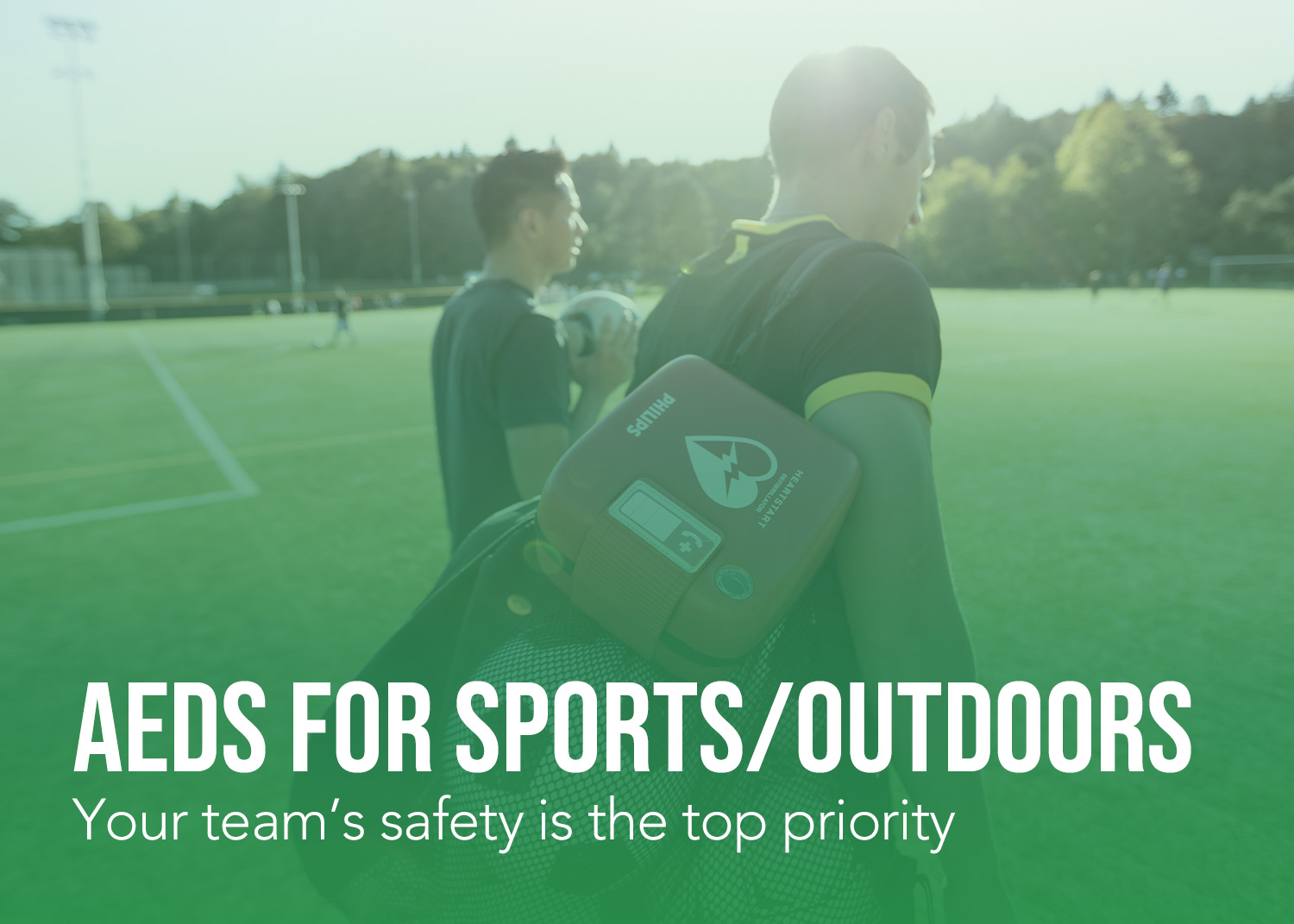
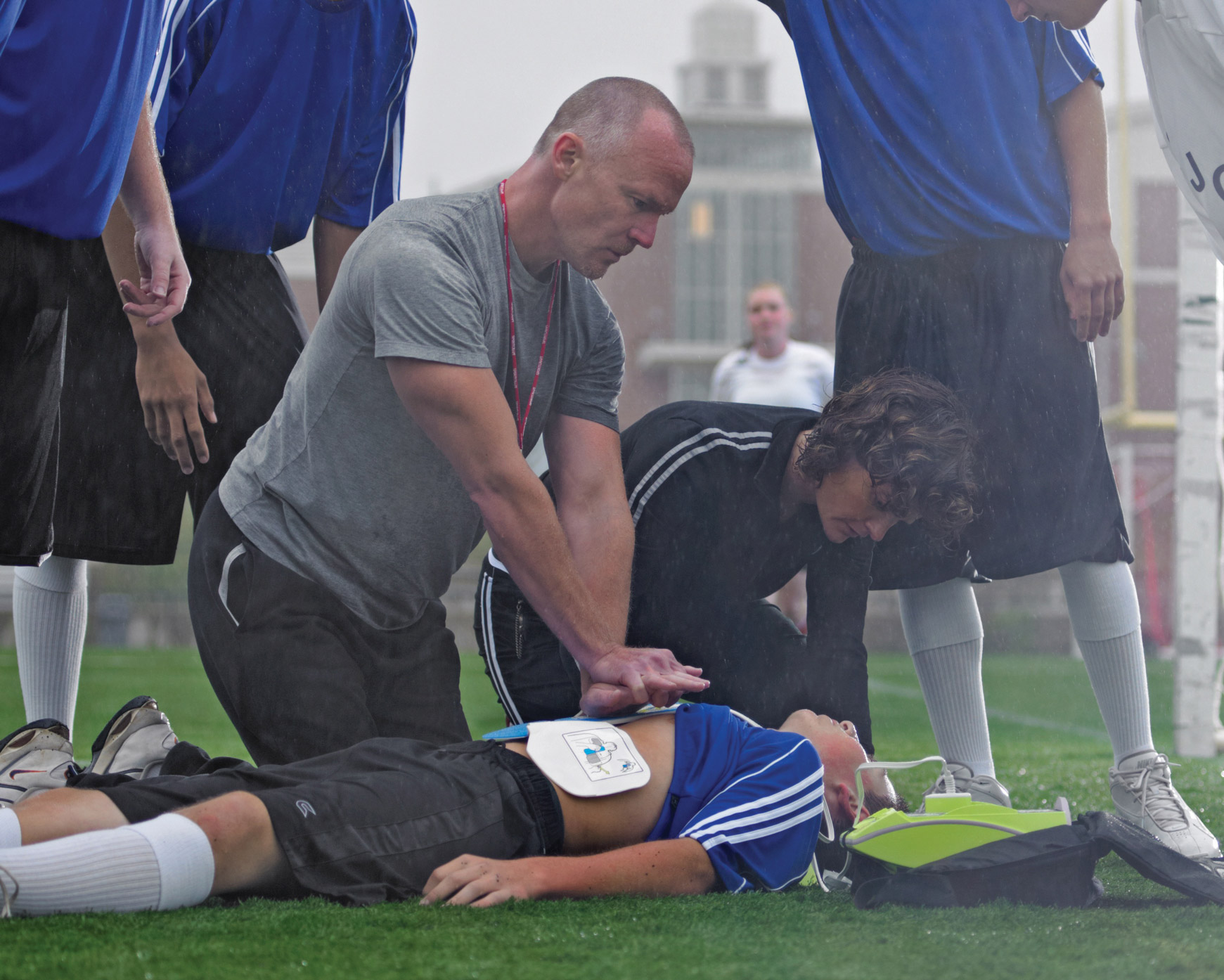
Your Athlete’s Safety is Top Priority
Sudden cardiac arrest takes the lives of over 366,000 people annually. Sudden cardiac arrest can strike anyone of any age, anywhere, at any time, without warning. Most of these cardiac arrests take place outside of the hospital, often happening in athletic settings or around outdoor events such as sporting events, practices, parks, hikes, and festivals. Without immediate emergency response, victims of cardiac arrest only have minutes to live. For every minute that goes by without a defibrillating shock from an AED, their chance of survival drops by 10%.
- SCA is the leading cause of death on school campuses
- SCA is the leading cause of death for student-athletes
- On average, SCA tragically takes the lives of between 7,000-10,000 American youth every year
We help hundreds of schools, athletic organizations, and parks install life-saving AEDs every year, and we often field questions about AEDs in these settings. How much does an AED cost? How hard is an AED to maintain? How important is CPR? Is my park/athletic facility required to have an AED? What AED features should my team consider? How many AEDs does my athletic facility need? We’ll do our best to answer all these questions and more.
A Simple Life-Saving Solution
Cardiac arrest can strike any coach, student, athlete, parent, or bystander of any age without warning. Sudden Cardiac Arrest is caused by an irregular rhythm of electrical activity in the heart, and can only be treated with an electric shock called defibrillation from an AED. Automated External Defibrillators are designed to be an easy-to-use, intuitive, and cost-effective life-saving solution.
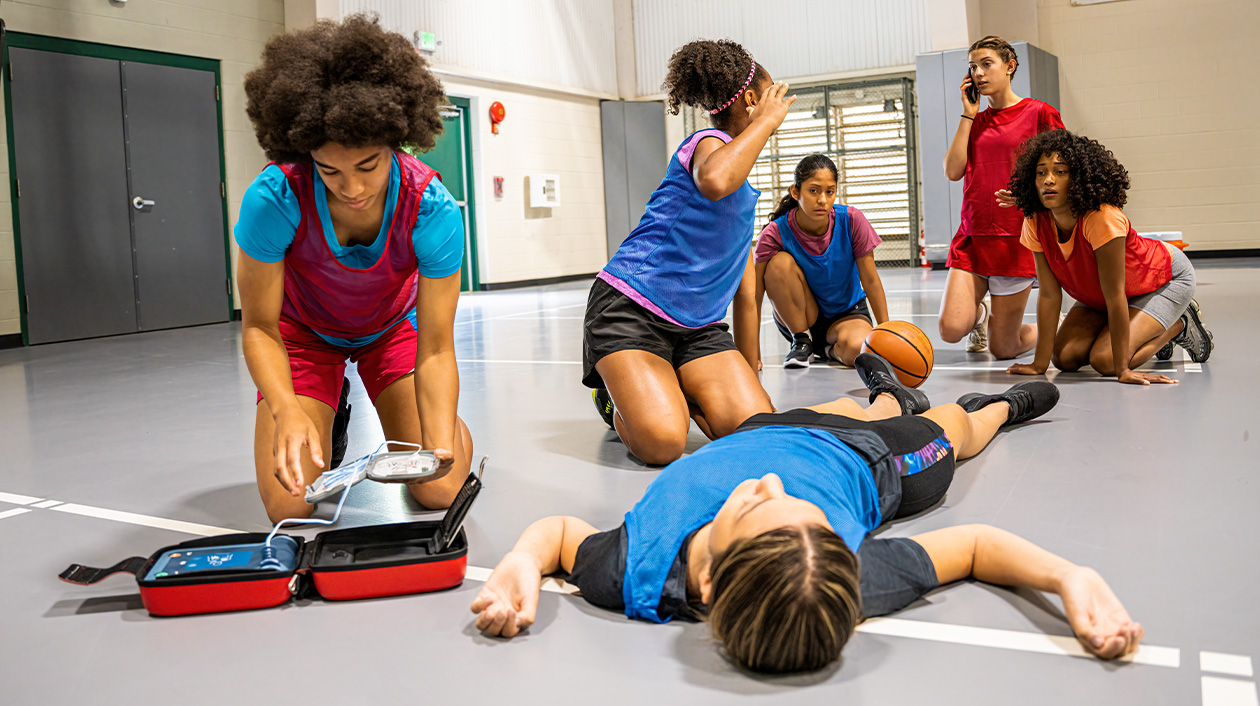

Preparing for AEDs in Sports
Types of AEDs:
AEDs come in all shapes and sizes but all are designed to be used by either an untrained bystander or a trained medical professional to deliver a life-saving shock in a critical situation. However, AEDs have features that make them ideal for certain settings. For athletic organizations and outdoor parks, we recommend the Zoll AED Plus, Cardiac Science G5, or the FRx AED from Philips. These new AED packages have a low long-term cost of ownership and come with many features ideal for athletic settings:
-
New AED,Rescue-Ready out of the box
-
Durable unit, can take a beating from being thrown into an athletic go-bag
-
Simple interface. Designed with ease-of-use in mind for any rescuer
-
Pediatric Pads or Key available to easily switch to a child-safe shock level
-
A timed metronomeguides rescuers on CPRtempo
-
Industry-leading batterylife (industry standard: 2 years)
-
Eight-Year manufacturer warranty(longest in the industry)
-
Daily, weekly, and monthly self-tests foreasy maintenance
-
AEDwall signavailable
-
First Aid Kitavailable
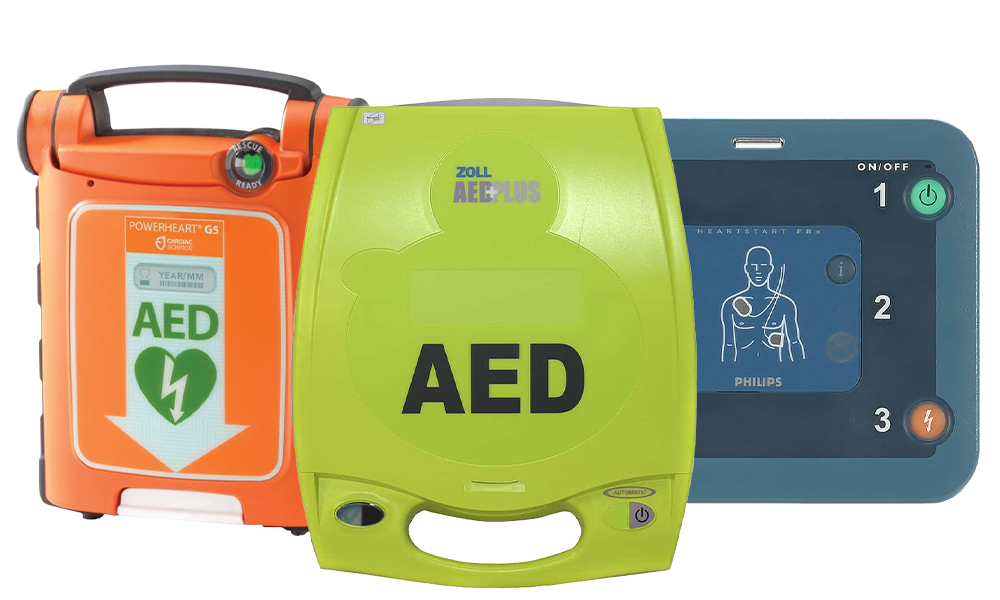
Emergency Response Plan
An Emergency Response Plan lays out the exact steps you should take if a player, athlete, coach, parent, or bystander has a sudden cardiac arrest near you or on your property. The ERP should include the specific instance of sudden cardiac arrest, noting the steps of emergency response as well as the locations of AEDs around your facility. Your school’s Emergency Response Plan should be reviewed annually, made available to all coaches and parents, and should include:
- The creation of a Cardiac Emergency Response Team
- The steps to activate the CERT team, notifying the local EMS, and handoff once paramedics arrive
- AED placement(s) within the facility and AED maintenance schedule
- Budgetary consideration for replacing old units, adding units to account for expansion/quicker response, annual AED maintenance, and replacing expired pads/batteries
- Cardiac arrest response drills
Maintenance Plan:
To ensure your AED device is working and ready to save a life, the AED unit must be stored and maintained properly. The AED Plus, G5, and FRx perform regular self-checks and will signal when something is wrong. However, it’s recommended you check on your AED monthly, and keep a record of annual device service, expiration dates for accessories, check-up history, and more.
- Check the green readiness indicator on the top right of your device
- Listen for chirping or beeping sounds indicating an issue with the device
- Ensure the pads and batteries are within their usable dates, reordering if either is about to expire.
-
Send your AEDs to a biomedical service provider for an annual Preventative Maintenance check-up. Trained and certified technicians will clean your device, ensure it passes all tests, and alert you to any needed repairs or issues.
Featured AEDs
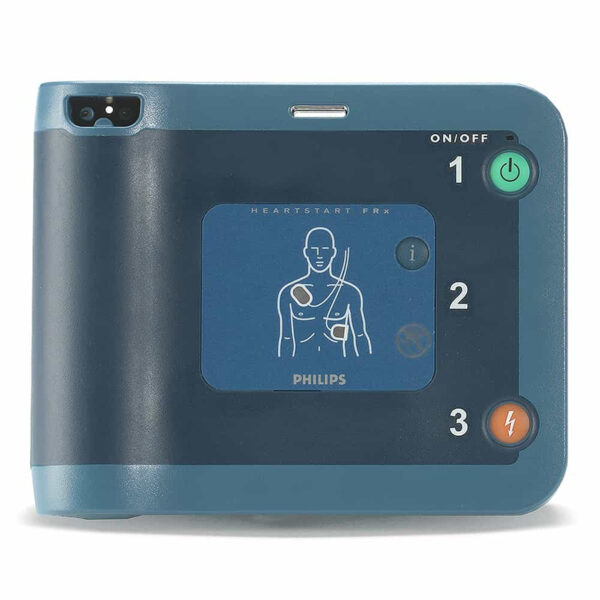
HEARTSTART FRX AED
The Philips FRx AED is a lightweight, tough, reliable device providing step-by-step voice instructions, CPR guidance and SMART biphasic shock technology. Optional pediatric key not included. The FRx is designed for ease-of-use and longevity
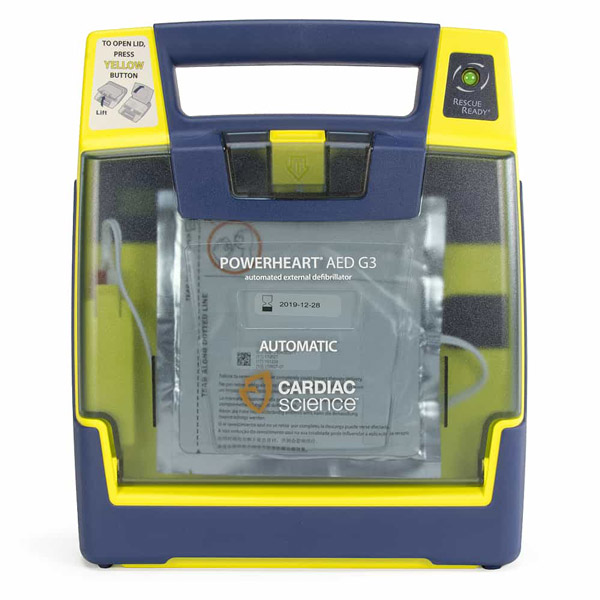
POWERHEART G3 AED
The Cardiac Science PowerHeart G3 AED, available in semi-automatic or fully automatic models, is equipped with STAR® biphasic waveform, voice and text prompts, and status indicators. The G3 is designed for clarity during critical moments.
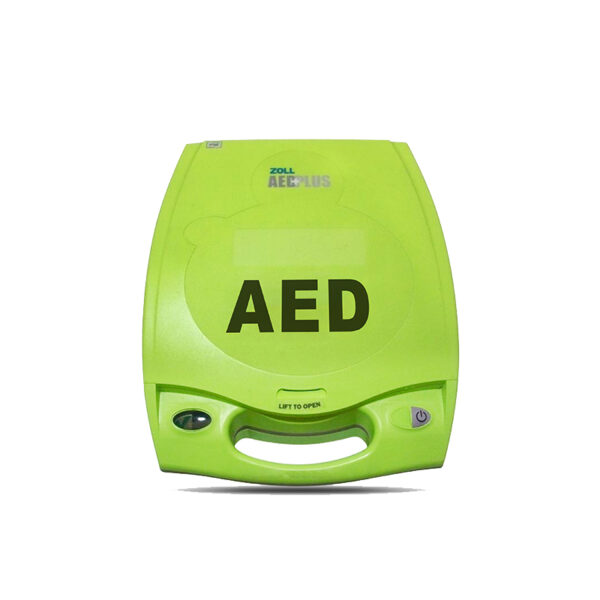
ZOLL AED PLUS
The ZOLL AED Plus sets a new standard for ease of use in emergency situations, delivering voice, text, and visual prompts alongside real-time CPR feedback. The AED Plus supports rescuers with Real CPR Help®, a robust design, and low ten-year cost of ownership.
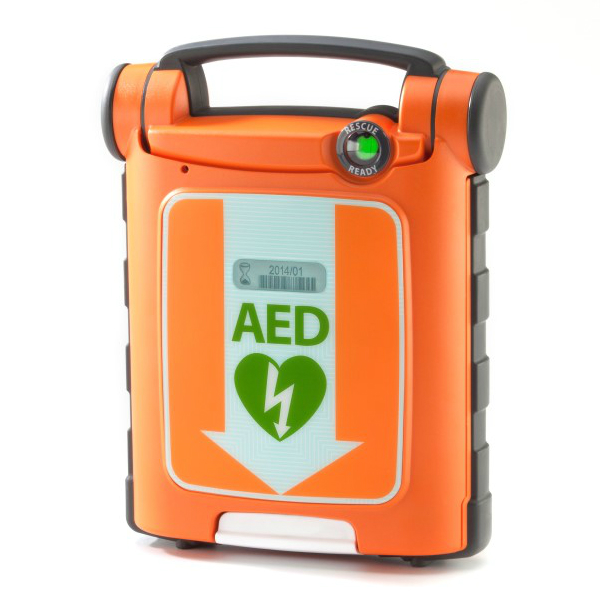
POWERHEART G5 AED
The Powerheart G5 AED from Cardiac Science boasts user-friendly features like dual-language functionality, clear voice and texts instructions, and variable escalating energy. The G5’s rugged reliability and smart technology ensures readiness, all backed by an 8-year warranty.

Frequently Asked Questions about AEDs in Sports
Does my athletic organization require an AED?
Some states require an AED for sports organizations, sports complexes, and schools. Many more states are even requiring AEDs in public gathering places such as fitness centers, gyms, and public parks. However, even if your state does not require it, keeping an AED nearby during any type of athletic event is absolutely critical. Cardiac arrest can be triggered by physical activity or even direct impacts to the chest, which can occur even in non-contact sports. Sudden cardiac arrest doesn’t only affect the elderly; every year we lose thousands of youth athletes. SCA is actually the #1 killer of student athletes.
What’s the best AED for my athletic program or park?
For athletic organizations, sports teams, athletic trainers, and parks, we recommend the Zoll AED Plus, Cardiac Science G5, and the Philips FRx AED. Our Sports AED Packages are designed with any athletic facility in mind, and is a comprehensive package with everything you need to keep a rescue-ready AED in your facility. These AEDs are durable, and can survive outdoor placements in a wall cabinet or even the wear and tear of athletic equipment in a coaches bag. The price of a new unit is an investment, but the industry-leading warranty, long lifetime on pads and battery life means the low cost-of-ownership pays off quickly and saves you money over a 3, 5, or 10 year outlook. All three units are in stock, ship quickly, and are supported by their manufacturers with all accessories.
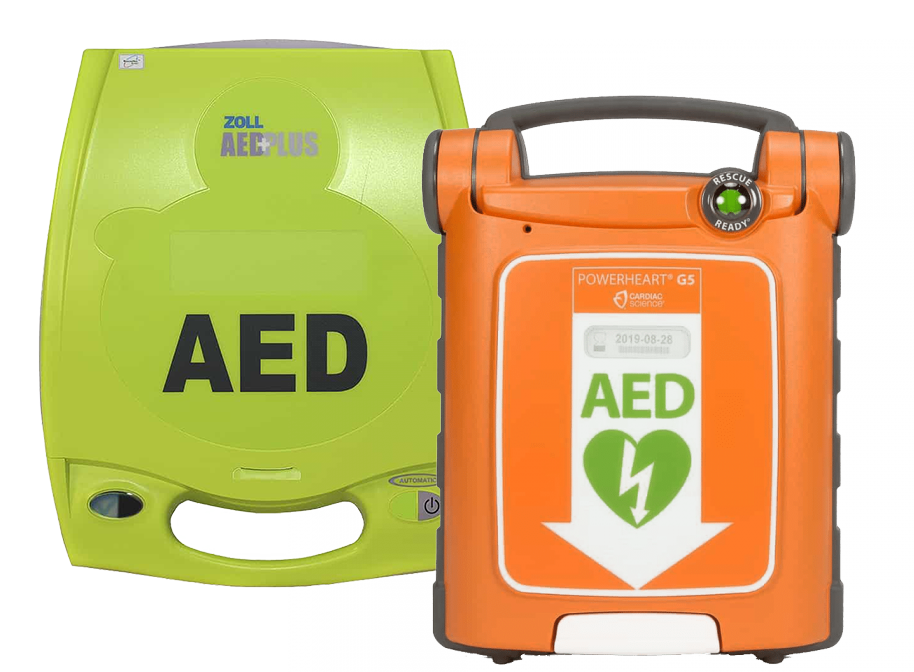
How do I afford an AED for my Sports organization?
AED cost can be a barrier for many parks, schools, trainers, and athletic facilities to purchase these life-saving devices. But studies show keeping an AED can improve survival rates by over 7x, saving thousands of lives every year in the US. Strategies for funding the purchase of AEDs for your team, park, or athletic facility include:
- Pursuing grants from local children’s safety organizations or Heart Health organizations. There are many foundations around the U.S. who’s primary focus is helping schools, parks, and youth athletic programs afford AEDs and teach CPR
- Look for help from local Rotary Clubs, many of which make tangible local investments in schools
- Partner with local retail stores and set up a donation program at checkout
- Many local health systems/hospitals help fund school AED programs
- Hold a local fundraising event, and teach the importance of CPR and quick response in a cardiac emergency
How many AEDs should my facility have?
Saving someone from sudden cardiac arrest relies on the amount of time that happens between the cardiac emergency and deployment of the AED. For every minute that passes after an SCA without a defibrillating shock, the survival odds decrease by 10%. Because time is so precious, AEDs should be never be more than three minutes (from emergency scene -> AED retrieval -> returning with AED) from any given location on your premises.
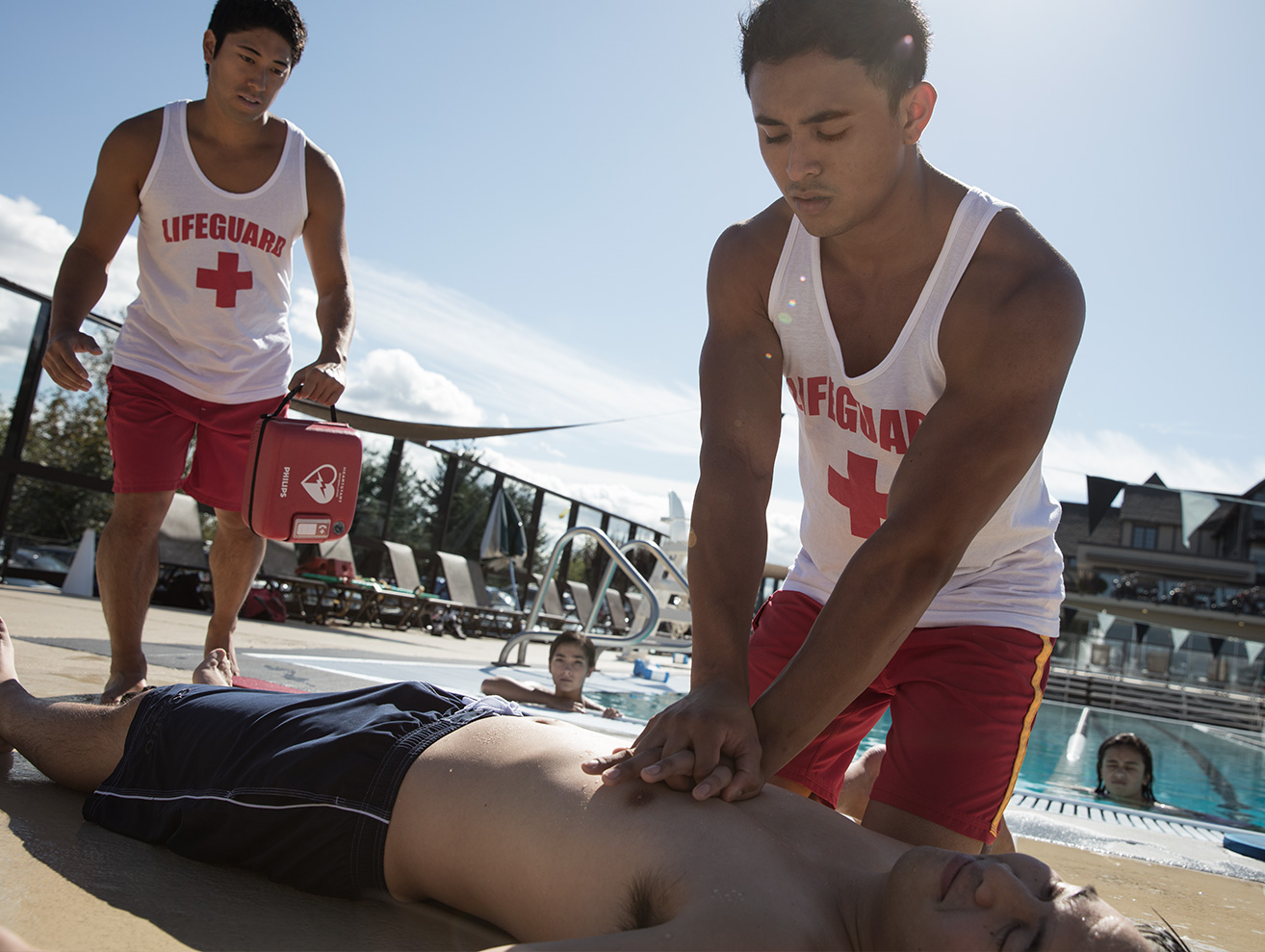
The exact number of AEDs in an athletic facility depends on several factors, including the shape and layout of your park/building, and how many athletic fields are on premise. A good rule of thumb is to keep at least one AED per major building. In many parks with multiple fields, spread out locations, hiking trails, thousands of seats, or large land areas, one AED is just not enough. A great proof of concept is putting your Cardiac Emergency Response Team to the test. Time how fast it is to retrieve the AED from different locations in your facility. If the time between emergency and deployment is more than three minutes, you will need to invest in more AEDs.

